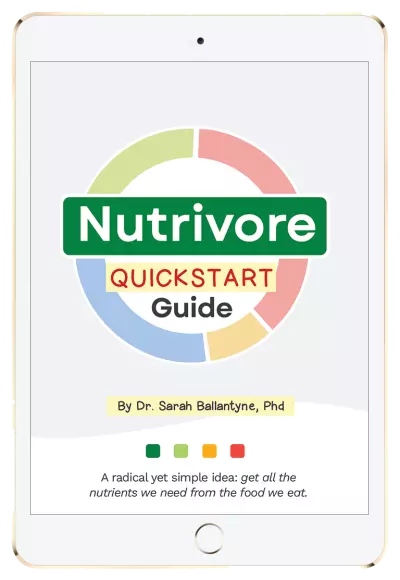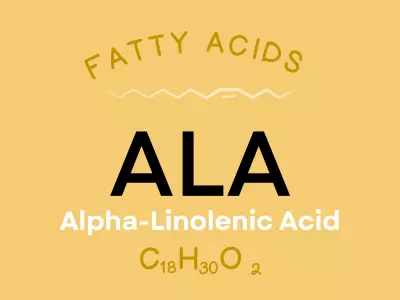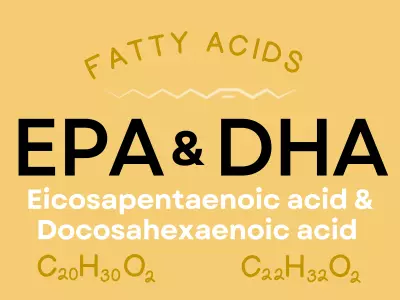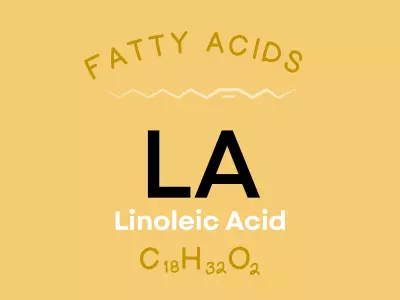Table of Contents[Hide][Show]
Polyunsaturated fats are also broadly categorized as omega-3 fatty acids and omega-6 fatty acids. These classifications relate to the location of the first double bond in relation to the end of the hydrocarbon tail. If the first double bond is between the third and fourth carbon atoms, it’s an omega-3 fatty acid. If it’s between the sixth and seventh, it’s an omega-6 fatty acid.
Omega-3 Fats
All omega-3 fats are characterized by a shared feature in their chemical structure: a double bond located three atoms away from their terminal methyl group. They also contain multiple other double bonds, making them “polyunsaturated” fats (in contrast to monounsaturated fats, which have only one double bond, or saturated fats, which have none). In general, omega-3 fats are used for chemical reactions within cells that produce signaling molecules involved in inflammation, blood pressure regulation, and pain perception. They’re components of the cell membrane, where they alter important structural properties like membrane permeability, fluidity, and flexibility—consequently impacting the activity of membrane receptor systems and influencing gene expression and signaling pathways. The omega-3s we consume from food alter the proportion of omega-3 fats that end up in red blood cells, cardiac tissue, immune cells, atherosclerotic plaque, and more, in turn affecting the characteristics of these cells and the function of their receptors!
Although the most common omega-3 fats we hear about are alpha-linolenic acid (ALA), eicosapentaenoic acid (EPA) and docosahexaenoic acid (DHA), there are actually 11 different omega-3 fats in total! But, these “big three” are considered most important for human health, and have been the subject of far more research than the lesser-known omega-3 fats.
Alpha-Linolenic Acid (ALA)
Alpha-linolenic acid (ALA) is the only truly essential omega-3 fatty acid. Like other omega-3 fats, it plays an important role in regulating inflammation, pain perception, and blood pressure. It’s also major structural component of the phospholipid layer of cell membranes. Getting enough ALA helps maintain cardiovascular health, while also potentially protecting against cancer, pneumonia, and some forms of depression.
Eicosapentaenoic Acid (EPA) and Docosahexaenoic Acid (DHA)
Eicosapentaenoic acid (EPA) and docosahexaenoic acid (DHA) are long-chain omega-3 fats that play important roles in neurological health, immune function, eye health and vision, inflammation, pain signaling, gut health, fetal development, and some aspects of cardiovascular health (like triglyceride levels and blood clotting). They exert many of their effects by helping form chemical messengers called prostaglandins, thromboxanes, and leukotrienes. EPA and DHA also serve as a structural component of the cell membrane, influencing important properties such as membrane fluidity and permeability. Small amounts of them can be synthesized from a shorter-chain omega-3 fat, alpha-linolenic acid (ALA).
Nutrivore Is a Game-Changer—These 5 Free Guides Show You Why
Sign up for the free weekly Nutrivore Newsletter and get 5 high-value downloads—delivered straight to your inbox—that make healthy eating simple and sustainable.

Omega-6 Fats
All omega-6 fats are characterized by a shared feature in their chemical structure: a double bond located six atoms away from their terminal methyl group. They also contain multiple other double bonds, making them “polyunsaturated” fats. In general, omega-6 fats are used for chemical reactions within cells that produce signaling molecules involved in the immune response, pain regulation, and inflammation.
Omega-3 fats compete with omega-6 fats for the same conversion enzymes, as well as for positions in cell membranes—which is why we often hear about the importance of a balanced ratio between these two families. Too much dietary omega-6 relative to omega-3 can interfere with omega-3 metabolism, and is associated with a number of chronic health conditions such as obesity, cardiovascular disease, Alzheimer’s disease, non-alcoholic fatty liver disease, inflammatory bowel disease, and rheumatoid arthritis. Historically, the human diet is estimated to have featured about a 1:1 ratio of omega-6 to omega-3 fats, whereas the modern Western diet has a ratio of 15 to 20:1 or higher (largely due to the increased consumption of omega-6 rich grains and vegetable oils, and under-consumption of omega-3 rich seafood)!
However, omega-6 fats do have important biological roles that support health. So, while excess omega-6 fat intake is potentially problematic, this doesn’t mean we want to avoid omega-6 fats altogether. Instead, a happy-medium moderate consumption is most beneficial. Two of the best-studied omega-6 fats are linoleic acid (LA) and a group of fatty acids called conjugated linoleic acids (CLA).
Linoleic Acid (LA)
Linoleic acid is the only essential omega-6 fatty acid. Along with being required for human growth and development, it serves as a structural component of cell membranes, plays a role in maintaining skin health and integrity, and is a precursor for bioactive lipid mediators. Although linoleic acid can lower LDL cholesterol levels, research hasn’t consistently shown any protective effect against heart disease. Likewise, there’s mixed evidence (some showing benefit, some showing harm) for the effects of linoleic acid on cancer. Higher intakes have also been associated with depression and obesity, although it may have a protective effect against diabetes.
Conjugated Linoleic Acids (CLA)
Conjugated linoleic acid (CLA) is an omega-6 fatty acid mostly found in meat and dairy products from grass-fed animals. Despite technically being a trans fat, CLA exhibits a range of beneficial health properties, including anti-cancer, anti-obesity, anti-diabetes, and anti-heart disease activities. It also promotes gut health and immune function.
Gamma Linolenic Acid
Gamma linolenic acid (GLA) is a polyunsaturated omega-6 fatty acid that may reduce symptoms of some chronic inflammatory diseases, particularly rheumatoid arthritis and atopic dermatitis. It may also benefit menstrual issues, diabetic neuropathy, cardiovascular health, and cancer—particularly via its conversion into other fatty acids and metabolites. Along with coming from food, it can be produced from another fat, linoleic acid.
Everything You Need to Jump into Nutrivore TODAY!

Nutrivore Quickstart Guide
The Nutrivore Quickstart Guide e-book explains why and how to eat a Nutrivore diet, introduces the Nutrivore Score, gives a comprehensive tour of the full range of essential and important nutrients!
Plus, you’ll find the Top 100 Nutrivore Score Foods, analysis of food groups, practical tips to increase the nutrient density of your diet, and look-up tables for the Nutrivore Score of over 700 foods.
Buy now for instant digital access.
The Essential Fatty Acids
Our bodies can convert any omega-6 polyunsaturated fatty acid to any other omega-6 polyunsaturated fatty acid, and similarly can convert any omega-3 polyunsaturated fatty acid to any other omega-3 polyunsaturated fatty acid. So, the shortest-chain omega-3 and omeag-6 fatty acids and the ones assigned as the essential fatty acids: alpha-linolenic acid (ALA; the shortest omega-3 polyunsaturated fatty acid) and linoleic acid (LA; the shortest omega-6 polyunsaturated fatty acid).
However, the term essential is a little misleading here because conversion from one omega-6 to another, or from one omega-3 to another, can be inefficient. So, while these two essential fatty acids have important biological functions that support our overall health, it’s also important to consume the longer-chain polyunsaturated fatty acids, especially arachidonic acid (AA), an omega-6 polyunsaturated fatty acid, and EPA and DHA, both omega-3 polyunsaturated fatty acids. While ALA and LA are abundant in plant foods, AA, EPA, and DHA are found in seafood, meat, and poultry.
Linoleic Acid (LA)
Linoleic acid is the only essential omega-6 fatty acid. Along with being required for human growth and development, it serves as a structural component of cell membranes, plays a role in maintaining skin health and integrity, and is a precursor for bioactive lipid mediators. Although linoleic acid can lower LDL cholesterol levels, research hasn’t consistently shown any protective effect against heart disease. Likewise, there’s mixed evidence (some showing benefit, some showing harm) for the effects of linoleic acid on cancer. Higher intakes have also been associated with depression and obesity, although it may have a protective effect against diabetes.
Alpha-Linolenic Acid (ALA)
Alpha-linolenic acid (ALA) is the only truly essential omega-3 fatty acid. Like other omega-3 fats, it plays an important role in regulating inflammation, pain perception, and blood pressure. It’s also major structural component of the phospholipid layer of cell membranes. Getting enough ALA helps maintain cardiovascular health, while also potentially protecting against cancer, pneumonia, and some forms of depression.
Learn What Foods Are the Best Sources of Every Nutrient

The Top 25 Foods for Every Nutrient
The Top 25 Foods for Every Nutrient e-book is a well-organized, easy-to-use, grocery store-friendly guide to help you choose foods that fit your needs of 43 important nutrients while creating a balanced nutrient-dense diet.
Get two “Top 25” food lists for each nutrient, plus you’ll find RDA charts for everyone, informative visuals, fun facts, serving sizes and the 58 foods that are Nutrient Super Stars!
Buy now for instant digital access.
Help me to keep building Nutrivore.com

I’m working on writing more awesome articles on this topic to be featured right here on this webpage. If you’re enjoying the content my team and I have created thus far and would like to see more, you can support our efforts to keep building out this site by joining the Nutrivore community on Patreon!
Plus every month, you’ll gain exclusive access to a *NEW* Q&A and behind-the-scenes podcast episode, a new e-book in a series, nutrient fun factsheet, and more! Sign up now and also get 5 free Nutrivore guides as a welcome gift! Win-win-win!






